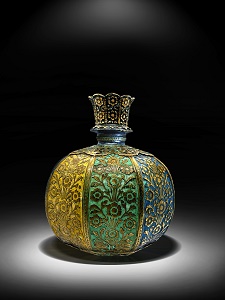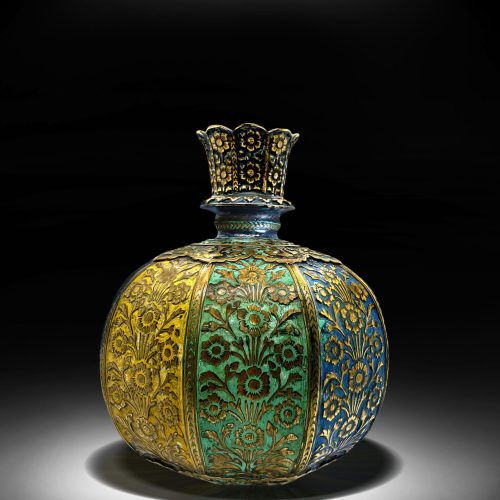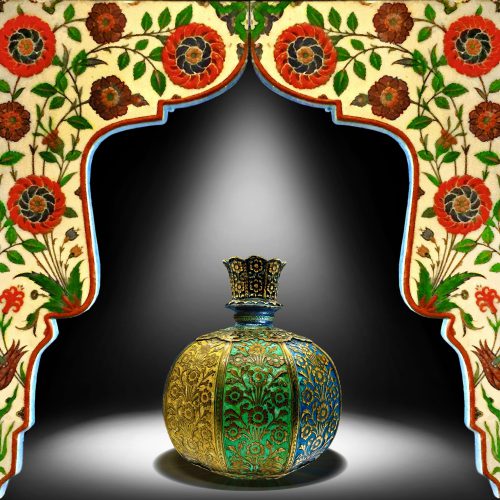PERIOD | 18th Century |
|---|
ORIGIN | LUCKNOW, INDIA |
|---|
DIMENSIONS | Approximate, 16.3 X 14.5 Cm |
|---|
DESCRIPTION: | Of a form bronze globular body and short cylindrical neck in a layout with a lotus rib, free-blown, round the body branched out compartment with the exquisite Polychromed, of a sheer silhouette of the garden of Eden, motifs and blossoms the pistachio green and cobalt blue with adorable yellow are orbiting around the body, the base and shoulder with a band of acanthus leaves, the moulding with lappets and the neck with poppy lotus emanates. |
|---|
Narrative: | Smoking was introduced into the Mughal empire at the end of Akbar’s reign, when Asad Beg, one of his noblemen, brought tobacco and hookahs, or waterpipes, back from Bijapur in the Deccan. Asad Beg reported that tobacco was well known at Mecca and Medina and presented Akbar with a fine jewelled pipe with a mouthpiece of Yemeni carnelian.Although Akbar’s physician forbade him to smoke, the fashion for hookahs soon caught on and, as in Iran, various objects were adapted to hold the scented water through which the tobacco smoke passed.These included coconuts and various types of glass and bronze and brass vessels, including bottles in which Dutch gin was exported, as well as spherical containers shaped like Indian waterpots, as here.These rested on rings or collars so that they stood upright. In addition, small hand-held hookah bases were made, and various of these Mughal Hookah bases are currently held in prominent Islamic museums and private Islamic collections. |
|---|
PROVENANCE: | From Distinguished Collections |
|---|
CERTIFICATE: | Comes with a certificate from the Art Loss Register |
|---|







